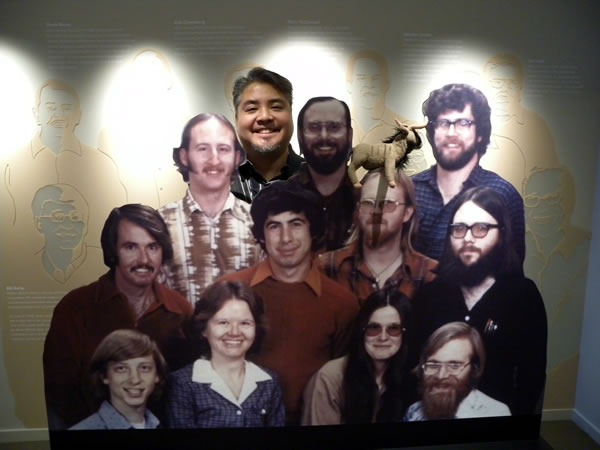It’s a busy, meeting-filled day for Yours Truly down at the local headquarters for The Empire. Here’s a (slightly edited) photo that I took at our big Evangelism team meeting around 3:30 this afternoon:

It’s a busy, meeting-filled day for Yours Truly down at the local headquarters for The Empire. Here’s a (slightly edited) photo that I took at our big Evangelism team meeting around 3:30 this afternoon:

The “sea change” that’s been going on at Microsoft for the past little while is one of the things that convinced me to join the company and one of the factors in their even asking me to come in for a job interview. One of the most telling signs of this sea change is in Microsoft’s new approach to open source and web, with initiatives like the Open Source Lab, improved standards support in IE8, PHP on Windows, the Web Platform Installer and Open Source Initiative-approved MS-PL license, to name a few.
We know that the web is a big salad bar of various technologies put together by different vendors and organizations, and at long last, it seems that we’re cool with that. We’ve been reaching out to web developers of all stripes, from Microsoft “true believers” to people who don’t typically build their stuff with or on our stuff.
Make Web Not War is an event being held in Vancouver on June 2nd and Toronto on June 10th where we invite people building solutions on the web – whether you build on Microsoft tech or not – to get together and:
The Vancouver event takes place today, June 2nd at Microsoft’s Vancouver office (1111 W. Georgia, 11th floor). It’s a half-day event featuring a presentation by Morten Rand-Hendriksen from Pink and Yellow Media as well as breakfast, a web partner community showcase and a lunch social.
The Toronto event takes place on Wednesday, June 10th at the Ted Rogers School of Management (use the entrance at 55 Dundas Street W.) and runs from 8:30 a.m. to 5:00 p.m.. It’s a full-day event with presentations by:
The Toronto event will feature breakfast, keynote, web partner community showcase, another keynote, lunch, breakout sessions, a Windows Server 2008 InstallFest, a web developer technical session and the FTW! competition final showdown. It’s be a very full day.
The registration fee for both the Vancouver and Toronto events is “donate what you want”, with a suggested donation of CAD$10. The money will go to a good cause: PREVnet.ca, the anti-bullying network.
Whether you’re a died-in-the-wool ASP.NET type, think in PHP or create new web applications by typing in rails mynewapp at the command prompt, Make Web Not War has something for you. For more details about Make Web Not War, check out the official site.
Microsoft Canada’s Audience Marketing Team wants to pick your brain!
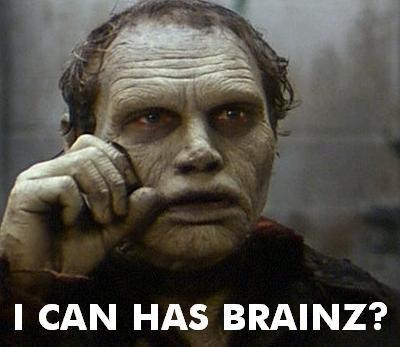
If you’re a reader of this blog, Global Nerdy, chances are that you write software, manage computer systems or do some kind of work in the realms of software, IT or the internet. If that’s the case, the folks on my team at Microsoft – the Technical Audience Team – would like to hear your opinions.

The reason we want to pick your brain is simple: we want to be able to avoid a “Cheez Cat” kind of situation like the one pictured above. We’d like to be able to correctly identify the kind of opportunities – things like conferences, events, workshops and other things for developers and IT pros – that you’d be interested in. We’d also like to know whether you’d be willing to share your insights, or participate in activities that we’re putting together and with the developer community.
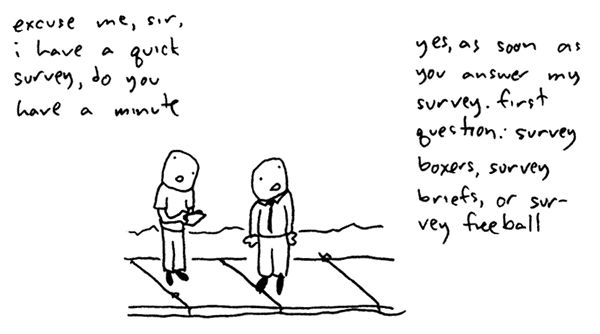
And now, it’s time to cut to the chase: yes, I’m asking you to fill out a survey. Yes, I know that there are things you’d rather do – maybe someone’s made a new Keyboard Cat video – but this survey is a chance for you to steer “The Empire”. We try to make sure that we’ve got hard data to back up the decisions we make, and surveys like this one are where we get the hard data from. We’d rather you tell us how to connect with you in a way that best fits your working style, skills, interests and passion than make what we call a S.W.A.G. (Silly Wild-Ass Guess).

If you’re based in Canada and you either write software (for the desktop, web or mobile) or manage computer systems, I’m asking you to fill out the survey. The official notes for the survey say that it takes about 15 minutes to fill, but you’ve probably guessed that you can fill it out in less time.
To take the survey, you can either click the giant red arrow above, or you can click this link. If you’ve already taken the survey, I’d like to thank you for doing so!
If you know a developer or it pro whom you think should take this survey, please forward a link to this article to them!
If programming in Ruby is your thing and you’re looking for work or workers, you should mark Saturday, June 6th on your calendar. That’s when employment.nil, Toronto’s first Ruby job fair, takes place at the Gladstone Hotel.
Organized by Pete Forde and the folks at Unspace – the local Ruby heroes behind things like the FutureRuby conference – employment.nil is an old-school job fair for Ruby programmers. In fact, it’s so old-school that no computers of any kind are allowed. If you’re looking for work, bring printouts of your code and be ready to write out ideas with pen and paper. If you’re looking for people to work for you, you can set up a booth, grade school science fair-style.
Want to find out more? Check out the employment.nil article in Rethink, Unspace’s blog.
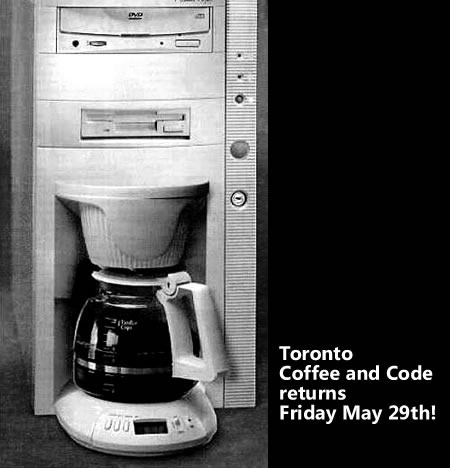
Yes, Toronto Coffee and Code returns today! It’s a day when I make myself (and by extension, Microsoft) very accessible by working out of a cafe and answering your questions, getting your opinions and sharing ideas. Once again, it’ll take place at the Dark Horse Cafe at 215 Spadina, near the lights between Dundas and Queen.
I’ve got some stuff to do at Microsoft Canada HQ in the morning, so I’m declaring tomorrow’s schedule to run from 1:00 p.m. to 6:00 p.m.. I might be there earlier, but I thought I’d give myself extra time in case traffic decides not cooperate. I’ll see you there!
If you’re pressed for time, the graphic below – which takes its inspiration from these articles by Kathy “Creating Passionate Users” Sierra — captures the spirit of this article rather nicely:
If you have a little more time to spare, I’m going to explain my belief that while netbooks have a nifty form factor, they’re not where the mobile computing action is.
When I was Crazy Go Nuts University’s second most notorious perma-student (back in the late ‘80s/early ‘90s), I took a handful of business courses at the recommendation of my engineering and computer science professors. “You’re going to have to learn to speak the suits’ language,” they said. Crazy Go Nuts University has a renowned business school and I thought it would be a waste not to take at least a couple of business courses. I especially liked the Marketing couse, and one lecture stands out in my mind: a case study comparing the dessert offerings of two major fast food chains.
In the interest of not attracting the attention of their lawyers, I’m going to refer to the chains as:
Both Monarch Burger and Jester Burger offered a dessert that went by the name “apple pie”. Let’s examine them.
 Monarch Burger went to the trouble of making their apple pie look like a slice of homemade apple pie. While it seems appealing in its photo on the menu, it sets up a false expectation. It may look like a slice of homemade apple pie, but it certainly doesn’t taste like one. Naturally, it flopped. Fast-food restaurants are set up to be run not by trained chefs, but by a low-wage, low-skill, disinterested staff. As a result, their food preparation procedures are designed to run on little thinking and no passion. They’re not set up to create delicious homemade apple pies.
Monarch Burger went to the trouble of making their apple pie look like a slice of homemade apple pie. While it seems appealing in its photo on the menu, it sets up a false expectation. It may look like a slice of homemade apple pie, but it certainly doesn’t taste like one. Naturally, it flopped. Fast-food restaurants are set up to be run not by trained chefs, but by a low-wage, low-skill, disinterested staff. As a result, their food preparation procedures are designed to run on little thinking and no passion. They’re not set up to create delicious homemade apple pies.
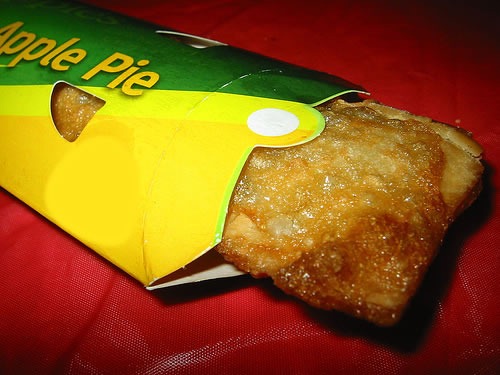
Jester Burger’s approach was quite different. Their dessert is called “apple pie”, but it’s one in the loosest sense. It’s apple pie filling inside a pastry shell shaped like the photon torpedo casings from Star Trek. In the 70s and 80s, the pastry shell had bubbles all over it because it wasn’t baked, but deep-fried. After all, their kitchens already had deep fryers aplenty – why not use them?
Unlike Monarch Burger’s offering, Jester Burger’s sold well because it gave their customers a dessert reminiscent of an apple pie without setting up any expectations for real apple pie.
Jester Burger’s pie had an added bonus: unlike Monarch Burger’s pie, which was best eaten with a fork, Jester Burger’s pie was meant to be held in your hand, just like their burgers and fries.
At this point, I am obliged to remind you that this isn’t an article about 1980s-era desserts at fast food burger chains. It’s about netbooks and smartphones, but keep those pies in mind…
Netbooks remind me of Monarch Burger’s apple pie. Just as Monarch Burger tried to take the standard apple pie form and attempt to fit it into a fast food menu, the netbook approach tries to take the standard laptop form and attempt to fit it into mobile computing. The end result, to my mind, is a device that occupies an uncomfortable, middle ground between laptops and smartphones that tries to please everyone and pleases no one. Consider the factors:
To summarize: Slightly bigger and pricier than a phone, but can’t phone. Slightly smaller and cheaper than a laptop, but not that much smaller or cheaper. To adapt a phrase I used in an article I wrote yesterday, netbooks are like laptops, but lamer.
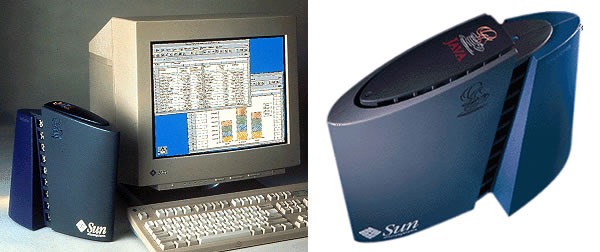
The uncomfortable middle ground occupied by the netbook reminds me of another much-hyped device that flopped – the network computer, which also went by the name "thin client". In the late 90s, a number of people suggested that desktop computers, whose prices started at the mid-$1000 range in those days, would be replaced by inexpensive diskless workstations. These machines would essentially be the Java-era version of what used to be called "smart terminals", combining local processing power with network-accessed storage of programs and data.
A lot of the ideas behind the network computer ended up in today’s machines, even if the network computer itself didn’t. Part of the problem was the state of networking when the NC was introduced; back then, broadband internet access was generally the exception rather than the rule. Another major factor was price – desktop and even laptop computers prices fell to points even lower than those envisioned for NCs. Finally, there was the environment in which the applications would run. Everyone who was betting on the NC envisioned people running Java apps pushed across the network, but it turned out that the things they had dismissed as toys — the browser and JavaScript, combining to form the juggernaut known as Ajax — ended up being where applications "lived".
When I look at netbooks, I get network computer deja vu. I see a transitory category of technology that will eventually be eclipsed. I think that laptops will eventually do to netbooks what desktop machines did to network computers: evolve to fill their niche. Just as there are small-footprint desktop computers that offer all the functionality and price point of a network computer along with the benefits of local storage, I suspect that what we consider to be a netbook today will be just another category of laptop computer tomorrow.
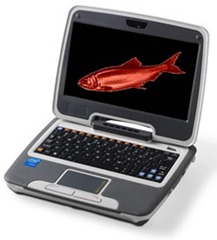
I’m going to go a little farther, beyond stating that netbooks are merely the present-day version of the network computer. I’m going to go beyond saying that while their form factor is a little more convenient than that of a laptop, the attention they’re getting – there’s a lot of hoo-hah about who’s winning in the netbook space, Windows or Linux – is out of proportion to their eventual negligible impact. I’m going to go out on a limb and declare them to be a dangerous red herring, a diversion from where the real mobile action is.

A quick aside: The photo above is not of a Jester Burger fried apple pie. In response to their customers’ so-called health concerns (really, if those concerns were real, they’d stop eating there), they started phasing out the fried pies in 1992 in favour of the baked kind. There are still some branches of Jester Burger that carry the fried pies, but a more reliable source is a fast food chain that I’ll refer to as “Southern Chicken Place”, or SCP for short. Those pies in the photo above? They’re from SCP.
Jester Burger made no attempt to faithfully replicate a homemade apple pie when they made their dessert. Instead, they engineered something that was “just pie enough” and also matched the environment in which it would be prepared (a fast food kitchen, which didn’t have ovens but had deep fryers) and the environment in which it would be eaten (at a fast food restaurant table or in a car, where there isn’t any cutlery and everything is eaten with your hands). The Jester Burger pie fills a need without pretending to be something it’s not, and I think smartphones do the same thing.
Smartphones are truly portable. They really fit into your pocket or hang nicely off your belt, unlike netbooks:

And smartphones are meant to be used while you’re holding them:
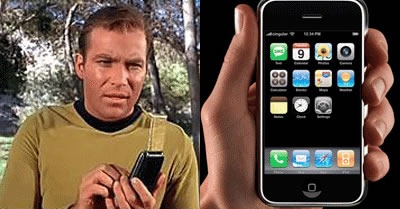
Just try that with a netbook. In order to really use one, you’ve got to set it down on a flat surface:

The best smartphones make no attempt to faithfully replicate the laptop computer experience in a smaller form. Instead, they’re “just computer enough” to be useful, yet better fit the on-the-go situations in which they will be used. They also incorporate mobile phones and MP3s – useful, popular and familiar devices — and the best smartphones borrow tricks from their user interfaces.
Smartphones, not netbooks, are where the real advances in mobile computing will be made.
One again, the thesis of this article, in graphic form:
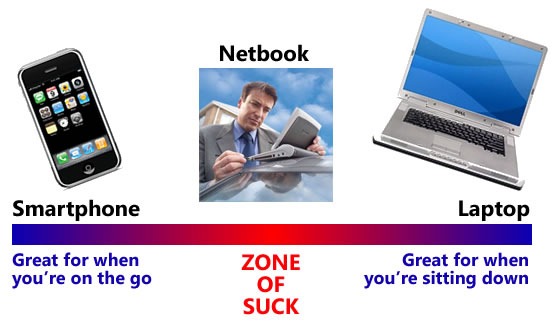
In the late 80s and early 90s, the people chose the fast food apple pie they wanted: the convenient, if not exactly apple pie-ish Jester Burger pie over Monarch Burger’s more-like-the-real-thing version.
When people buy a smartphone, which they’ve been doing like mad, they’re buying their primary mobile phone. It’s the mobile phone and computing platform that they’re using day in and day out and the device that they’re pulling out of their pockets, often to the point of interrupting conversations and crashing the trolley they’re operating.
When people buy a netbook, they’re often not buying their primary machine. It’s a second computer, a backup device that people take when their real machine – which is often a laptop computer that isn’t much larger or more expensive – seems like too much to carry. It’s a luxury that people might ditch if the current economic situation continues or worsens and as the differences between laptops and netbooks vanish. Netbooks, as a blend of the worst of both mobile and laptop worlds, will be a transitional technology; at best, they’ll enjoy a brief heyday similar to that of the fax machine.
The people are going with smartphones, and as developers, you should be following them.
In the mid 1990s, well before he was Microsoft’s user interface guru, Bill Buxton often asked people to carry out a simple little exercise: draw a picture of a computer. Most, if not all, of the people he asked would draw something that fit the common mental model of the desktop computer of the era: cathode ray tube-type monitor, keyboard, mouse and that box housing the motherboard and drives that many people mistakenly refer to as “the CPU”.
If Buxton were to ask the question today, the drawings of computers might look like these:
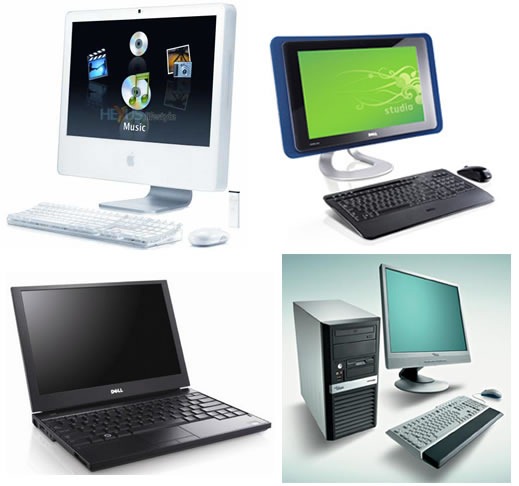
If he asked the question in the mid-to-late 1980s, the drawings might’ve looked like these:
![80s-era computers: Apple ][, Commodore 64, TRS-80 and IBM PC 80s-era computers: Apple ][, Commodore 64, TRS-80 and IBM PC](https://www.globalnerdy.com/wordpress/wp-content/uploads/2009/05/80s-computers.jpg)
And had he asked the question in the mid-60s, the drawings might’ve looked like this:
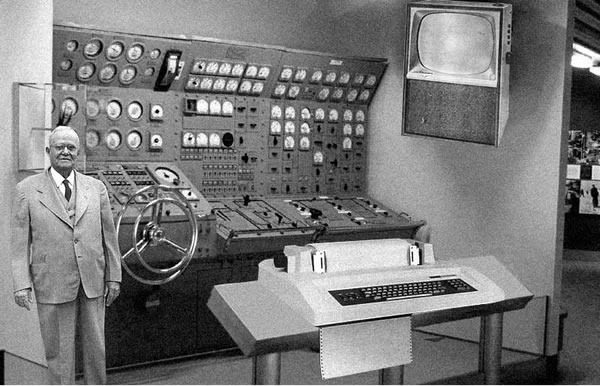
Buxton likes to point out that the changes in computers from the 60s onwards are largely in the implementation technology, processing power and outward appearance. When most people draw computers, he said, they’re merely drawing their mental model, which is based on the outer packaging.
However, if you use the mental model of a technologist, computers have been essentially the same instruction/ALU/storage/input-output boxes whether they’ve occupied whole rooms or fit in your pocket. They’ve been pretty much the same at their core, in the same way that fancy tech and hybrid engine aside, there really isn’t too much that separates a present-day Toyota Prius from a Model T Ford.
If Bill Buxton could approach Microsoft Corporation as a person — and hey, that’s the way the law treats corporations, so why not? – and asked him/her to draw a computer, I suspect that s/he would draw something based on mental model of a souped-up circa 2000 computer: a desktop computer with a nice flatscreen monitor, running Windows XP and having a somewhat limited connection to the ‘net.
I think that this is a problem. I also think that the source of this problem is Microsoft’s success.
“A PC on every desk and in every home” was Microsoft’s longest-lived slogan and the company mantra for the first 24 years of existence. Like the best slogans, it succinctly summarized the company’s goal. The problem is that the goal has pretty much been reached. In most parts of the first world, a good chunk of the second world and even a sizeable fraction of the third world, you can easily find a desktop computer, and it’s quite likely that it’s running some sort of Microsoft software.
Since 1999, the company mantra – I really hesitate the use the phrase “vision statement” — has been a little more vague. The company’s been thrashing between them a little more frequently, as you can see in this list of mantras taken from chapter 1 of How We Test Software at Microsoft:
The post-1999 mantra all seem a little limp in comparison to the original. Reading them, I cannot help but think of a quote attributed to web design guru Jeffrey Zeldman:
"…provide value added solutions" is not a mission. "Destroy All Monsters." That is a fucking mission statement.
Because the old mantra lasted for so long and the new mantras just don’t have the same straightforwardness and gravitas (How We test Sofware at Microsoft quotes Ballmer as saying that we may never again have a clear statement like the original to guide the company), the original remains quite firmly etched in the company culture and mindset.
I think it’s holding us back.

The original mantra doesn’t just focus on the desktop, it actually mentions it by name. In 1975, when computers were room-filling behemoths that you could access either via batch or time-share, the concept of a desktop computer was downright radical. If you think the iPhone is impressive (and yes, it is), imagine how mind-blowing the Altair 8800, the first commercially-available desktop computer, must have been to a geek back in the Bad Old Days. It was the platform on which Microsoft’s first product – a little programming language called Altair BASIC – was launched, and it was BASIC that in turn launched the company.
In his book Outliers, Malcolm Gladwell talks about how the Altair 8800 was a golden opportunity for Bill Gates and his buddies at his fledgling company, then called “Micro-Soft”. Unlike a lot of other companies at the time, they took the desktop computer seriously. Even when IBM got into the desktop computer game in 1981, it was a product of their Entry-Level Systems division, a clear indication that they thought the PC was a machine you bought until you were ready to graduate to a real computer. I don’t think that this philosophy ended up serving them well.
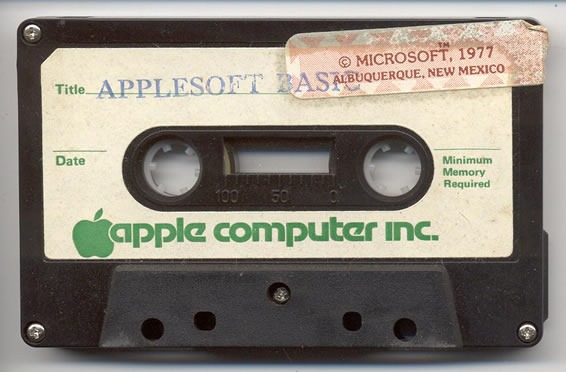
Since the big boys were paying no mind to the desktop computer, upstarts like Microsoft had a big empty field in which to play, and they thrived. Crack open just about any late 70s/early 80s computer that had BASIC built in – even Apple machines — and you’ll see a row of ROM chips with a Microsoft copyright notice. It was Microsoft that swooped in with PC-DOS when a deal with Digital Research for a PC version of CP/M was slow in coming (and this is despite the fact that Gates recommended that IBM go to Digital for an OS). A lot of people’s experience with desktop computers (and Microsoft revenue) is defined by circa-1995 Microsoft thanks to Windows 95 and the results of Bill Gates’ memo titled The Internet Tidal Wave, both of whose influences are still felt to this day.
Once upon a time, it used to be unusual to walk into someone’s home or office and see a computer. These days, it’s unusual to walk into someone’s home or office and not see a computer, and Microsoft’s focus on the desktop had a lot to do with that.

When electric motors first became available, engineers envisioned factories and eventually houses being equipped with a single electric motor. They imagined that the central motor would, through a series of gears and drive belts, be connected to whatever machines in the house or factory had to be driven by it. What happened in the end is that rather than relying on some central motor, electric motors “disappeared” into the devices that used them. Here’s an exercise to try: go and count the electric motors in your house or apartment right now. The number should be a couple dozen, and if you can’t find them, this article might help.
When big, room-filling computers first became available, engineers envisioned businesses being equipped with a single computer in a manner roughly analogous to the aforementioned big central motor. We know what happened in the end – while many businesses do make use of big datacenters, a lot of the computing power got spread out into desktop computers.
I have a theory that comes in two parts:
Most of the company’s attention, at least to an outside observer, seems to be focused on Windows 7. Yes, chances are that with computer sales being what they are, Windows 7 will probably end up on more of laptops and netbooks than desktops, but I consider those devices to simply be the desktop computer in a more portable form. It worries me that there have been more concrete announcements about Windows 7 on netbooks than upcoming versions of Windows Mobile, despite the iPhone and BlackBerry-driven evidence that the real mobile action is in smartphones.
(Tomorrow, I’ll post an article in which I argue that netbooks are a dangerous red herring pulling away our attention from devices like smartphones.)
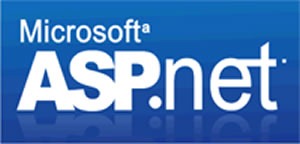
Even when the company reaches out beyond desktop development, there’s no escaping the desktop “gravity well”. Consider ASP.NET (that is, the “traditional” ASP.NET, not the recently-released ASP.NET MVC). To my mind, as well as the minds of a lot of other web developers, it’s a web framework that tries really hard to pretend that the web doesn’t exist. It makes use of a whole lot of tomfoolery like ViewState to create a veneer of desktop app-like statefulness over the inherently stateless nature of the web and a programming model that tries to mimic the way you’d write a desktop application. It’s almost as if it were designed with the mantra “the web is like the desktop, but lamer” instead of “the web is like the desktop, but everywhere”. Although the framework works just fine and there are a number of great sites and web apps built on it, I think a lot of developers sensed this design philosophy and went elsewhere for web development.
(An aside: My old boss at OpenCola in late 2001 told me that he’d been meeting with Microsoft people and suspected that Internet Explorer 6 would be the final version of their browser. The expectation that web pages and web applications would be replaced by Windows client applications pushed over the net, a prediction similar to one made by the Java folks a few years prior.)
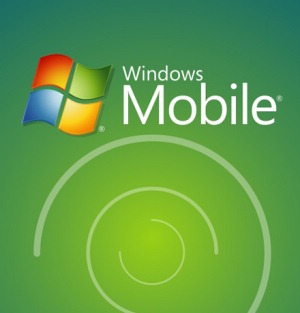
The same situation exists with Windows Mobile’s current user interface, which is basically a subset of Windows’ standard UI controls for the desktop, scaled down to fit smaller screens, and with a stylus standing in for the mouse. It’s almost as if it were designed with the mantra “mobile computing is like desktop computing, but lamer” instead of “mobile computing is like a mobile phone plus PDA and an MP3 player, but cooler.” If the ASP.NET design mantra is a whisper, the Windows Mobile mantra is a scream.
I suspect that the reason the XBox 360 didn’t fall into a similar kind of trap — “set-top boxes are like desktop computers, but lamer and only for games” – is that the XBox team is situated off the Microsoft Campus and less susceptible to the desktop influence.
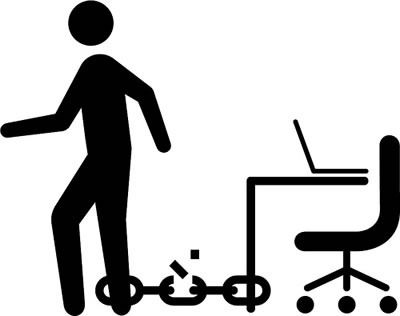
At my most recent one-on-one meeting with my manager John Oxley, we talked about a need for each member of our Evangelism team to define his or her area of focus. The Microsoft platform is a vast, nerdy expanse spanning the range from embedded computing all the way to Cray supercomputers; no single person can hope to cover it all.
He already had a good idea of what I wanted to focus on, and by now, I guess you do as well. I feel that just as computing expanded beyond the big computer rooms and onto our desktops, computing is expanding beyond our desktops into all sorts of different places:
While I believe that Windows 7 is a necessary part of the Microsoft platform, I’m not too worried about focusing on it – there are more than enough people at the company to promote and evangelize it. I want to focus on the platforms that I feel that Microsoft hasn’t given enough love and attention: the non-desktop platforms of the web, mobile and gaming, as well where they intersect.
It’s a big area to cover, but I think Microsoft needs to be active in this area if it wants to be true to its forward-looking roots. I even have a mantra for it: “To help web, mobile and game developers using Microsoft tools go from zero to awesome in 60 minutes.” I want to give developers both that rush when getting started with a new technology as well as the sustained passion to keep working with it, in the same way that Ruby on Rails and the iPhone got developers with an initial flash of excitement and turned it into long-term passion. It’s an ambitious, audacious mission, but no more so than the one coined by a bunch of scruffy nerds in New Mexico in the the 1970s: “A PC on every desk and in every home.”
